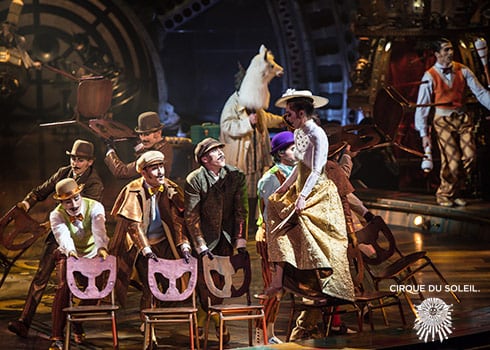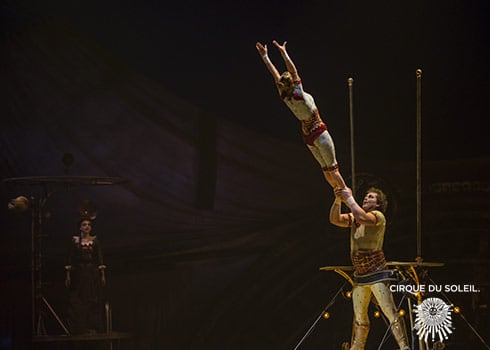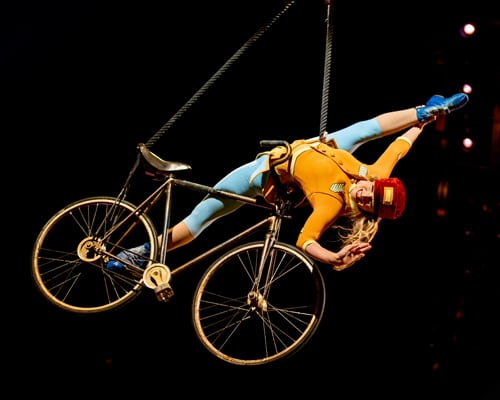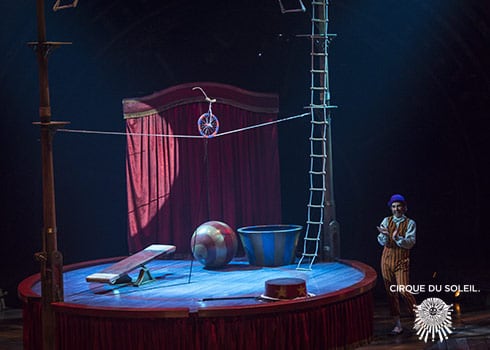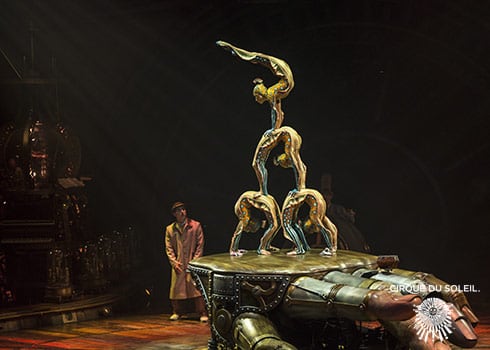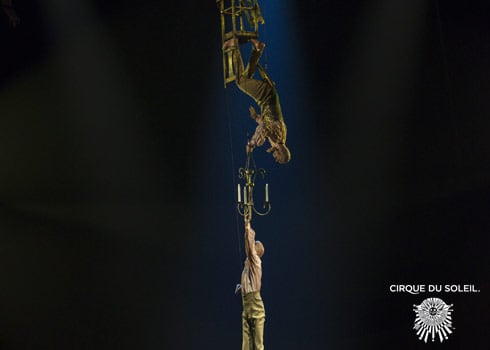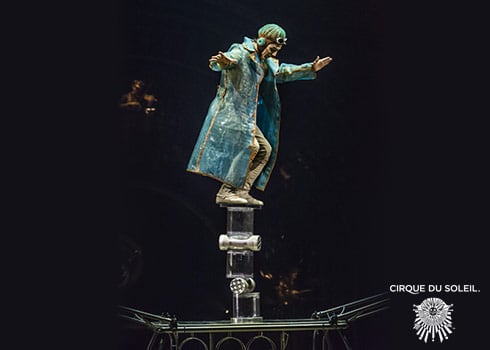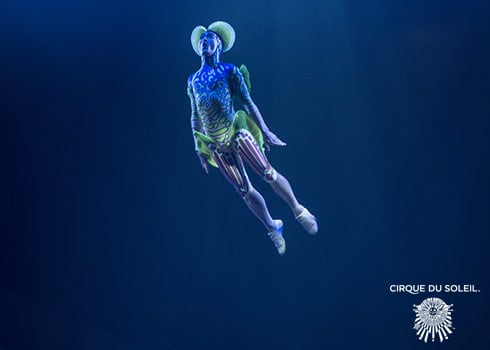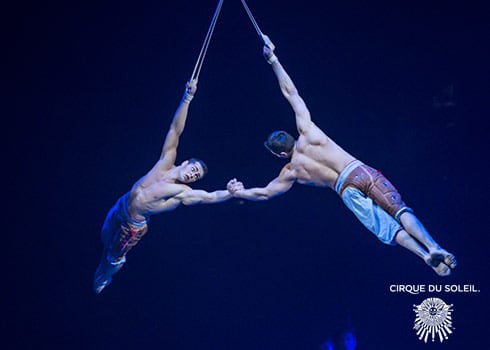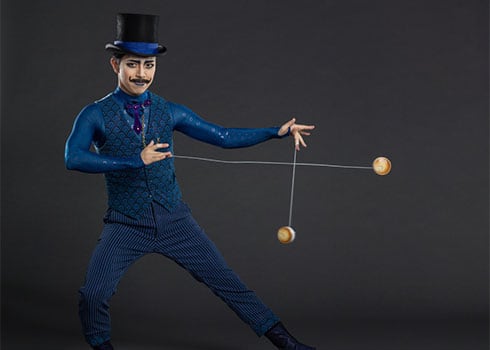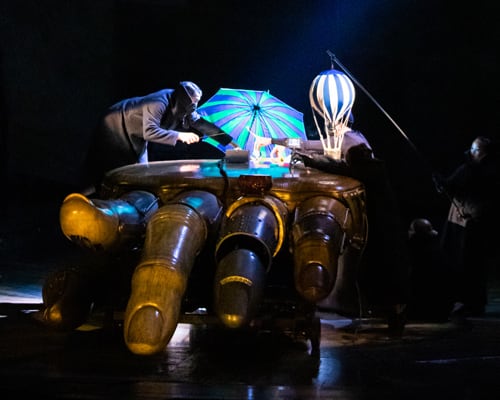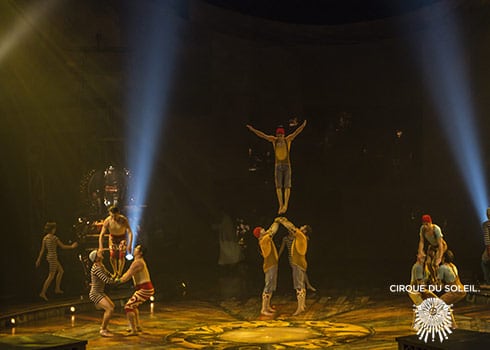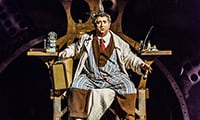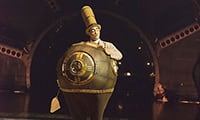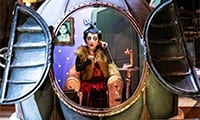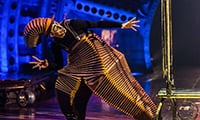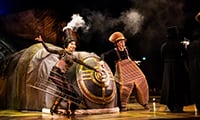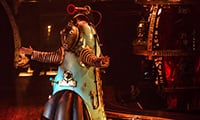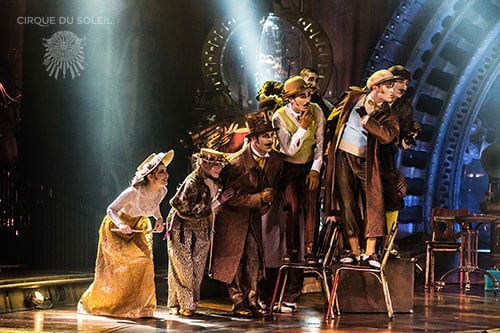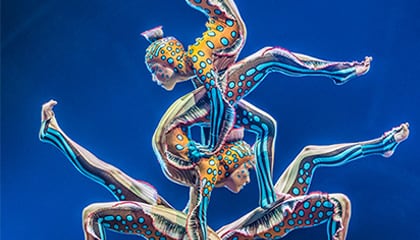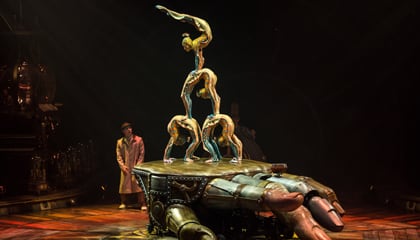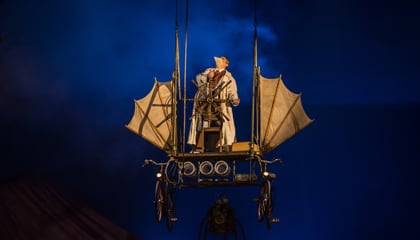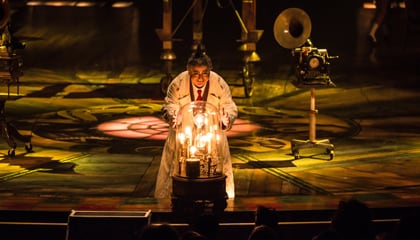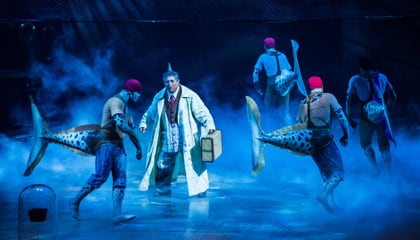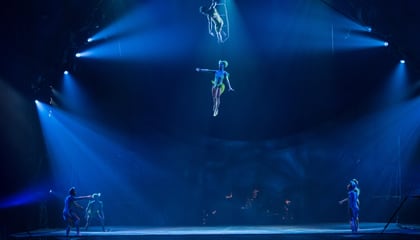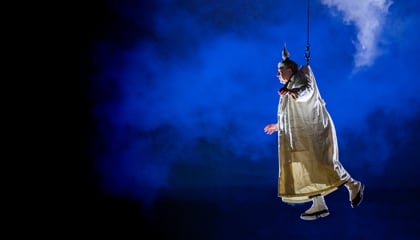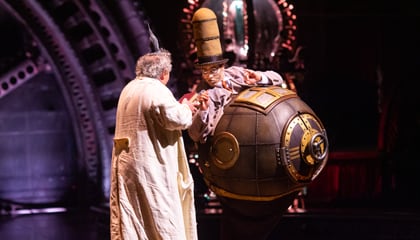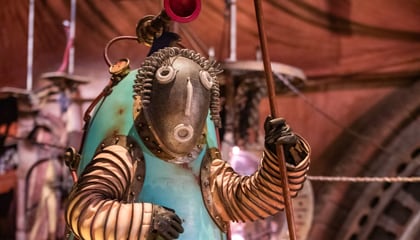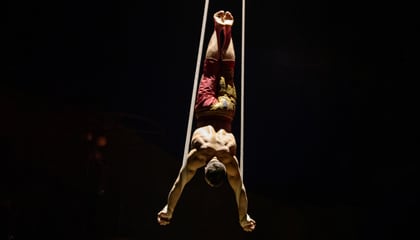COSTUMES – THE CURIOUS ATTIRE OF A HYBRID WORLD
A fitting tribute to the power of the human imagination, the costumes of KURIOS™ – Cabinet of Curiosities are the result of a visual exploration of the beginnings of science, of the discoveries and inventions that led to the industrial revolution of the 19th Century – from the steam locomotive to electrical power to electromagnetic waves. They embody and celebrate the advancements of science, but in an imaginary, parallel world. While the visual references may seem self-evident, the show’s curious yet familiar characters and costumes transport the audience to a time suspended somewhere between past and future, in an alternate reality, as if science had evolved without the internal combustion engine and as if the golden age of the steam engine had continued on, uninterrupted.
Hybrid forms and oversized shapes
The costumes of the Visitors from another world (Mr. Microcosmos, Klara and Nico) are the result of unusual blends and odd associations: e.g. the attire of the Seeker Assistants (the Kurios) – oddball half-human, half-mechanical characters built from scraps and recycled parts by their ingenuous andingenious creator.
Costume Designer Philippe Guillotel explored unusual shapes that have affinities with the Bauhaus costumes or of Alfred Jarry’s Father Ubu to create startling and often amusing characters.
Mr. Microcosmos – The “bigger is better” ethos that drives the retro-futuristic aesthetic of the show is on the opposite side of the spectrum of the miniaturization that characterizes the electronic era. A case in point is the costume of the potbellied Mr. Microcosmos. “He’s like a mechanical Obelix [from the Franco- Belgian cartoon characters Asterix & Obelix], but instead of holding a tiny dog in his arms, he lugs around a small lady in his belly wherever he goes, and he’s hardly aware of it,” says Guillotel.
Mr. Microcosmos carries Mademoiselle Lili, his intuitive counterpart, inside his costume using a sling not unlike a baby carrier. Antanina Satsura, the artist who plays Mademoiselle Lili, is 3.3 feet tall and weighs 39 pounds. She lives inside her host’s overcoat. Through the door in Mr. Microcosmos’ belly, we can see the furnished interior of Mademoiselle Lili’s quarters, which include an armchair as well as other essentials of a Victorian home. At the beginning of the show, an extension of Mr. Microcosmos’ coat unfolds into a locomotive out of which emerge a swarm of travelers from the 19th Century.
Nico the Accordion Man – Nico’s accordion costume allows him to bend very low or stand straight up so he can be at eye level with absolutely everyone. His pants are folded like a piece of origami from an unwoven textile (like the material normally used in shoe lining) and are inspired by the early photography camera darkrooms.
Klara the telegraph of the invisible –Klara wears an antenna skirt made of hula-hoop-type rings. By swirling around and pointing her apparatus in various directions, she can receive invisible electromagnetic waves. Her hoop skirt is inspired by Fritz Lang’s Metropolis and is shaped like early parabolic antennas. The print on her leotard evokes electrical circuits and connections.
TRANSFORMED BASIC MATERIALS
Philippe Guillotel chose five or six main materials that he used extensively and in all possible forms. For example, certain parts of the Travelers’ costumes and the top part of the Accordion Man’s costume are made from a stretch material to which metal foil was added. This comfortable and washable material makes it easy to create very realistic faux leather. The images on the metalized polyester jersey fabric are actually photos that were printed using a technique called sublimation, which sets the images in the fibers of the material.
3D printing was also used to create volumes that seem heavy but are in fact as light as they are tough and durable. This technique was used, for instance, to build the yoke held by the artists who carry the clouds. The clouds per se are made of thermally molded pieces of Plastazote (polyethylene foam).
COSTUME CLOSE-UPS
- During the Cradle duo act, the costumes worn by the two “mechanical dancers” that emerge from the box like Fabergé jewels evoke a pair of wax dolls. The cut is inspired by early sportswear and vintage circus costumes. The materials, however, are quite modern and highly sophisticated (velour effects and faux leather appliqués in gold).
- The costumes in the acro-net act are an allusion to the way film director Georges Méliès imagined Martians; hence the scales as well as the fin and fishtail.
- The rola-bola specialist wears a translucent aqua-colored overcoat. The fabric is reminiscent of the first plastics such as Bakelite and Rhodoid.
- Mr. Microcosmos’ belly alone weighs a little over twenty pounds and has its own independent systems for lighting and ventilation.
- More than a hundred costumes were created to dress the cast.
- All costume elements that come in contact with the artists’ skin are washed every night. Two people spend 2 hours every day, 6 days a week, for a total of 24 hours a week, doing the laundry.
